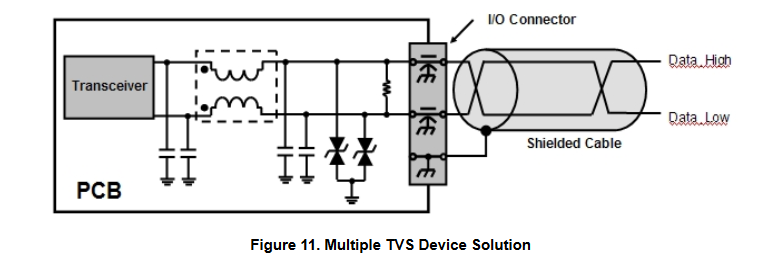I'm currently looking into securing my RS-485 connections against ESD. My current understanding is that a TVS diode is put between the data line and GND, so that any discharge will be shorted to ground immediately, without going through other devices (sometimes also against +5V [>USB], not yet sure how that is supposed to work out or where to look it up).
Now I've found some sources that also put a TVS diode between the two data lines (Protecting RS-485 by TI), some that don't and one even omits the ground TVS completely (TI again).
So apparently I don't completely understand how that's supposed to work and what the TVS between the two data lines tries to accomplish and I seek enlightenment so that I may not fry my circuit by accident. The first document explains it in a way I don't completely understand and the second one doesn't explain the reason at all (or I'm too blind to find it).

